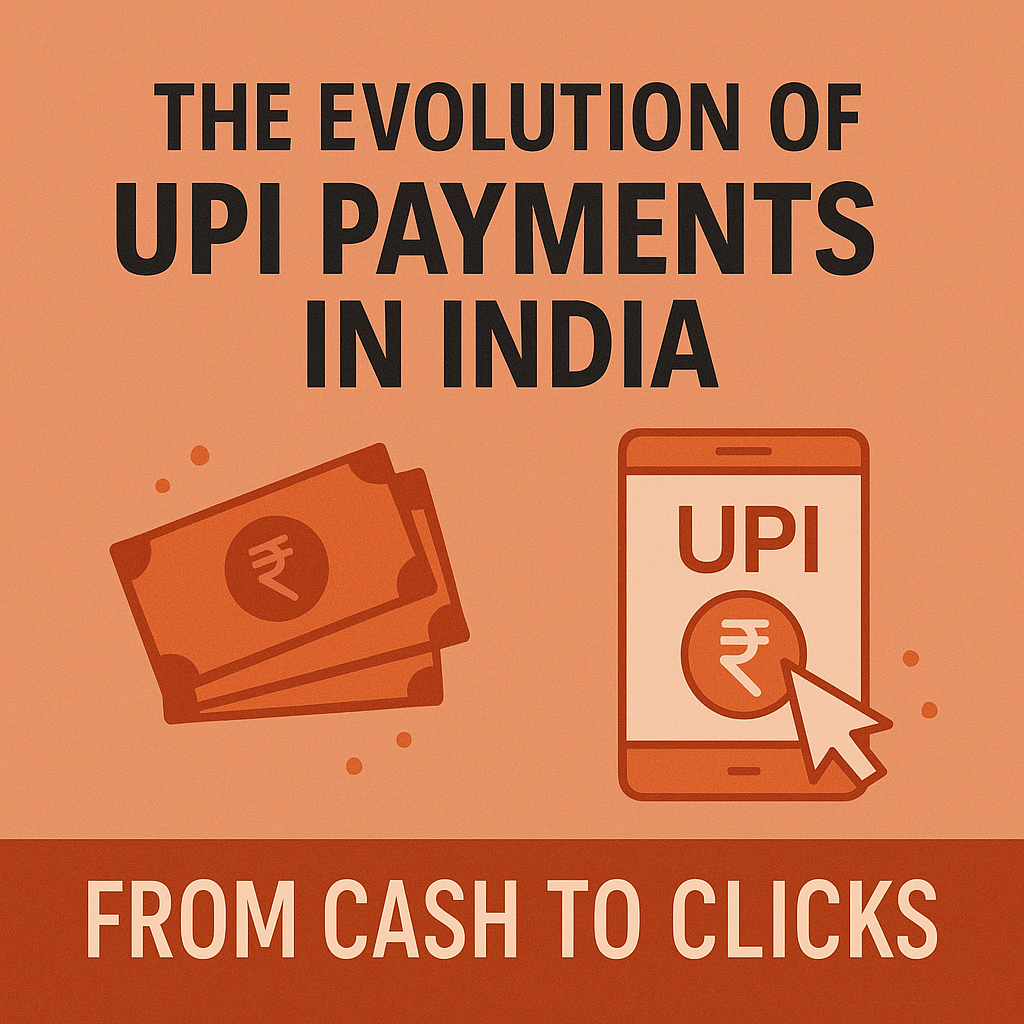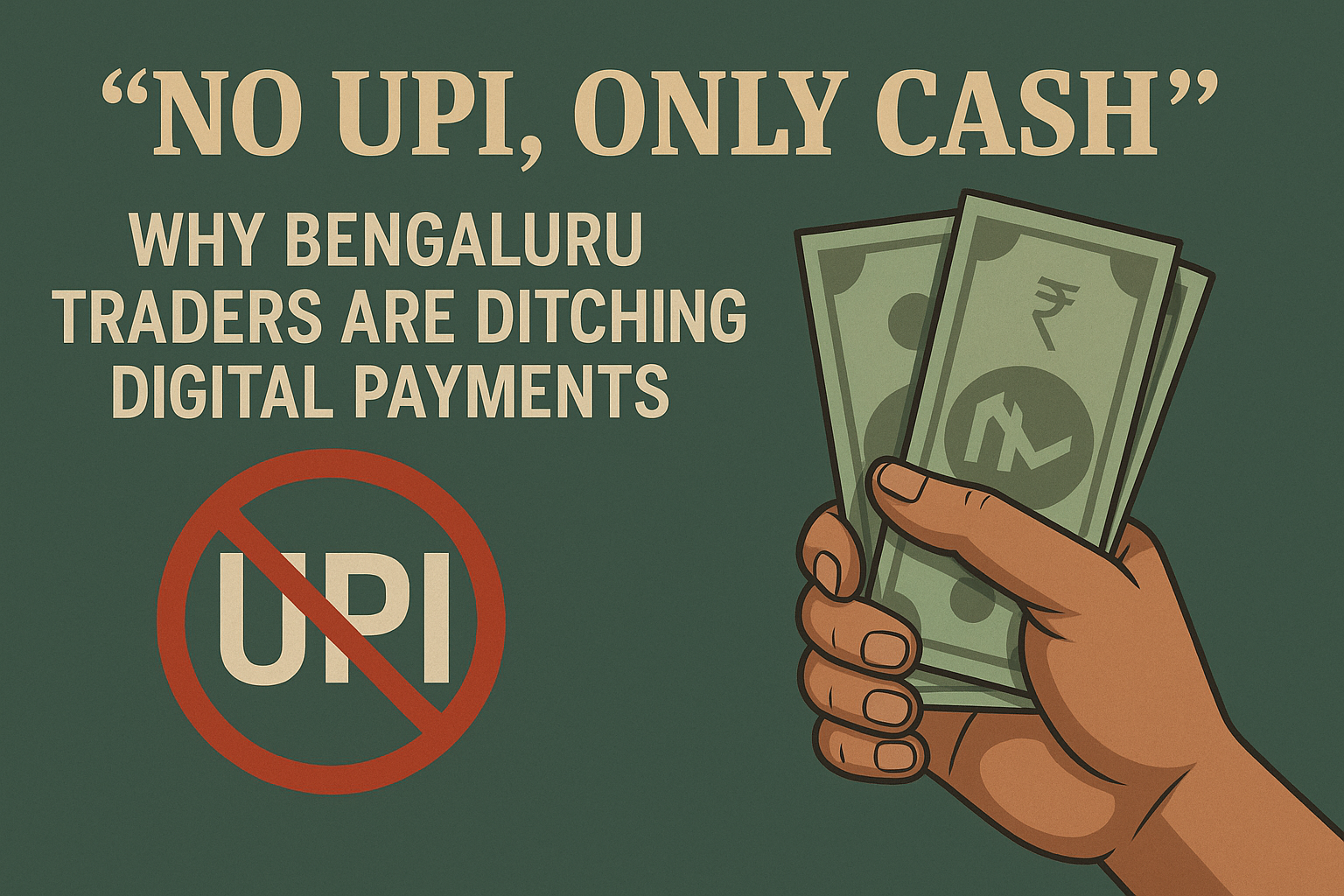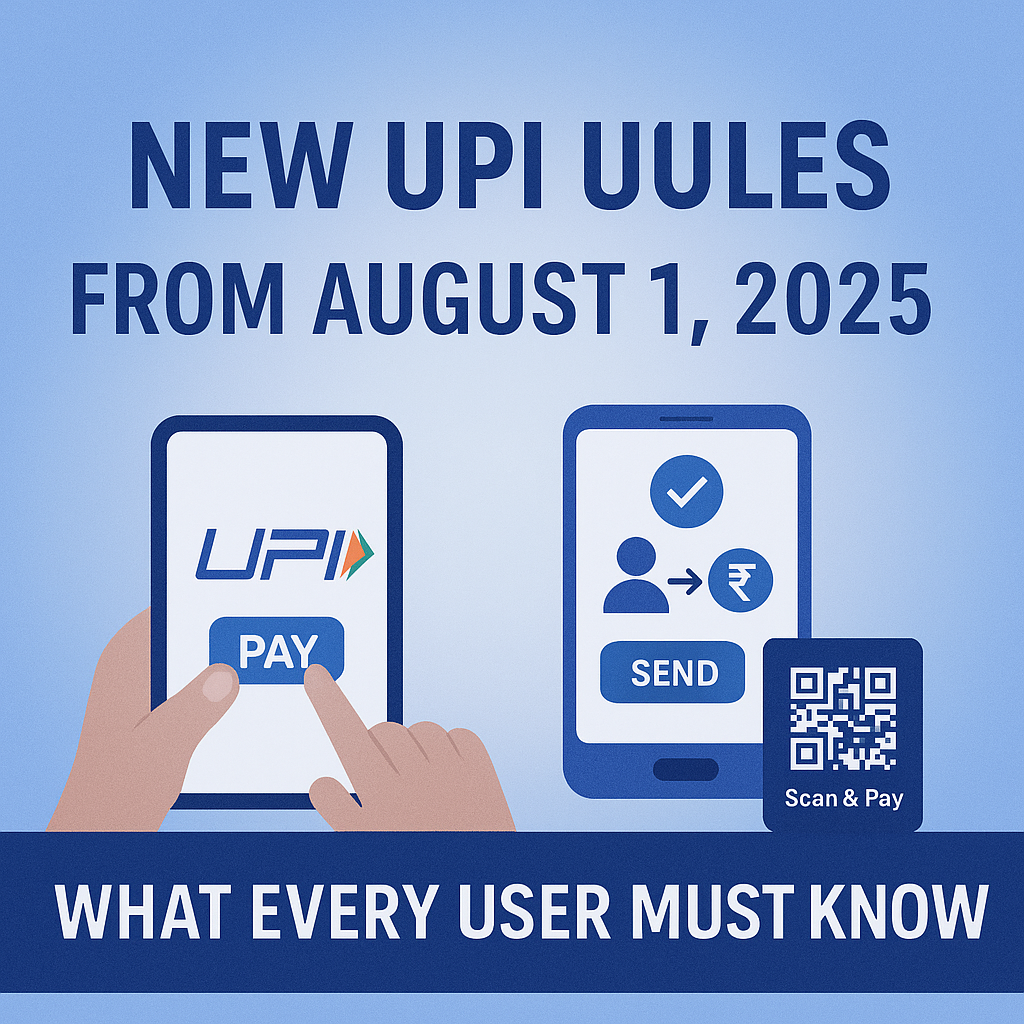India has witnessed a dramatic shift from cash-based transactions to digital payments in just a few years. At the heart of this transformation lies the Unified Payments Interface (UPI)—a groundbreaking innovation developed by the National Payments Corporation of India (NPCI). Launched in April 2016, UPI has redefined the way Indians send and receive money, making instant bank transfers, cashless transactions, and QR code payments a part of everyday life.
In this article, we explore the full evolution of UPI payments, from its early adoption to its current dominance in India’s fintech ecosystem. We’ll also cover the technology behind UPI, major players like Google Pay, PhonePe, and Paytm, and how UPI is shaping the future of India’s digital economy.
What is UPI?
UPI (Unified Payments Interface) is a real-time interbank payment system that enables users to transfer money between two bank accounts using a smartphone. It eliminates the need for IFSC codes, account numbers, or NEFT timings. With just a Virtual Payment Address (VPA) like yourname@bank, users can send or receive money 24/7—even on holidays.
Key features:
- Instant bank-to-bank transfers
- No transaction fees for users
- Multi-bank support in one app
- Supports QR code, mobile number, or UPI ID
- Operates 24/7, 365 days
Timeline of UPI’s Growth
2016: The Beginning
- NPCI launched UPI with support from RBI and 21 banks.
- Apps like BHIM and a few bank apps supported UPI in its initial phase.
2017: Demonetization and Mobile Payments
- The aftermath of demonetization accelerated digital adoption.
- Google Tez (now Google Pay) and PhonePe became mainstream UPI apps.
2018–2019: QR Code Boom
- Small shops began using UPI QR codes.
- Bill payments, recharges, and merchant transactions rose sharply.
2020: Pandemic Push
- COVID-19 encouraged contactless payments.
- UPI crossed 2 billion monthly transactions for the first time.
2021–2023: Deep Rural Penetration
- UPI Lite, UPI 123Pay enabled offline and feature phone payments.
- Over 350 banks integrated with UPI, even in rural areas.
2024–2025: Cross-Border & Credit Integration
- Countries like Singapore, UAE, and France started accepting UPI.
- Credit card on UPI was introduced via RuPay cards.
- UPI crossed 12 billion monthly transactions (June 2025).
How UPI Works
- User registers on a UPI app with a mobile number linked to a bank account.
- UPI PIN is created for secure authentication.
- Transactions are performed using:
- UPI ID (VPA)
- Mobile number
- Account + IFSC
- QR code
The transaction is routed via NPCI’s UPI switch in real time, and the amount is credited instantly.
Key Players in the UPI Ecosystem
- NPCI: Governing body and UPI infrastructure provider
- Banks: Issuers and acquirers for UPI transactions
- Apps (PSPs):
- Google Pay
- PhonePe
- Paytm
- BHIM
- Amazon Pay
These apps offer advanced UPI features like auto-pay, bill payments, rewards, and credit integration.
Government Initiatives to Boost UPI
- Zero MDR Policy: No charges on UPI payments to promote adoption.
- Digital India Mission: UPI is central to India’s goal of becoming a cashless economy.
- RBI Guidelines: Allowing credit-on-UPI and increasing interoperability.
- International Integration: UPI is now accepted in Nepal, UAE, France, Bhutan, and Singapore.
Challenges Faced by UPI
Despite massive success, UPI faces several operational and regulatory challenges:
- Server overloads during peak hours
- Fraudulent transactions through social engineering
- GST compliance checks using UPI data (e.g., Karnataka tax notices)
- No revenue model for app providers due to the Zero MDR policy
Still, the government and NPCI are working on solutions like UPI Lite, UPI AutoPay, and rate-limiting APIs to improve system resilience.
Future of UPI in India
UPI is set to become the default mode of digital payment in India. Key future trends include:
- UPI for credit card payments
- Voice-enabled UPI for feature phones
- AI-based fraud detection
- Micro-credit disbursements via UPI
- Global expansion and remittance use cases
With each innovation, UPI is inching closer to the vision of a unified, inclusive, and secure financial system accessible to every Indian.
Conclusion
From just ₹500 crore in monthly volume in 2016 to ₹20+ lakh crore in 2025, UPI has rewritten the rules of money movement in India. Whether you're paying a vendor, splitting bills with friends, or shopping online, UPI makes it all seamless.
Its success lies in its simplicity, speed, and openness. As the world watches India lead the digital payment revolution, UPI continues to be the crown jewel of financial inclusion, fintech innovation, and public infrastructure.
Frequently Asked Questions (FAQs)
1. What is the full form of UPI?
UPI stands for Unified Payments Interface, a real-time payment system developed by the National Payments Corporation of India (NPCI) for instant bank-to-bank transfers using mobile devices.
2. What does UPI mean in banking?
In banking, UPI is a digital interface that enables customers to link multiple bank accounts into one app and perform money transfers, merchant payments, bill payments, and more using a Virtual Payment Address (VPA) without requiring traditional bank details.
3. What is the UPI transaction limit per day?
Most banks have a default UPI limit of ₹1 lakh per day, though some allow up to ₹2 lakh. For specific cases like merchant payments or government services, limits may be higher. It depends on your bank and the UPI app being used.
4. What is the UPI limit for the first 24 hours?
For new UPI users or newly linked accounts, banks often impose a limited transaction cap of ₹5,000 to ₹10,000 during the first 24 hours as a fraud-prevention measure. The limit gradually increases after verification.
5. How is UPI different from NEFT or IMPS?
- UPI: Instant, 24x7, works with UPI ID or QR codes.
- NEFT: Batch-based, may take time; works during banking hours.
- IMPS: Instant like UPI but requires account + IFSC details.
UPI is more user-friendly and doesn’t need IFSC or account numbers.
6. Which is the best UPI app in India in 2025?
The top UPI apps as of 2025 include:
- Google Pay
- PhonePe
- Paytm
- BHIM
- Amazon Pay
All are safe, RBI-regulated, and support cashback and merchant services.
7. How can I activate UPI on my phone?
- Download a UPI-enabled app.
- Register your mobile number linked with your bank account.
- Create a UPI PIN using your debit card.
- Start sending and receiving money via UPI ID or QR code.
8. What is a UPI ID?
A UPI ID, also called Virtual Payment Address (VPA), is your unique digital address used for UPI transactions. It looks like yourname@bank or mobileno@upi. It replaces the need to share bank details.
9. What is a UPI number?
A UPI number is an alternate, simpler way to receive payments. It’s typically a mobile number registered with your bank and linked to UPI, so users can send money directly to your mobile without entering an ID.
10. What is UPI Lite?
UPI Lite is a simplified version of UPI for low-value transactions (under ₹500). It allows payments without requiring a UPI PIN, offering faster and more seamless experience for everyday purchases like snacks, transit, etc.
11. What is UPI AutoPay / Mandate?
A UPI mandate allows you to authorize recurring payments such as:
- OTT subscriptions
- Utility bills
- Loan EMIs
Once approved, the payment is auto-debited on schedule without requiring you to approve each time.
12. What is a UPI Circle?
UPI Circle is a new social payments feature that enables group-based transactions and tracking. It allows friends or teams to form a circle, split expenses, track payments, and manage shared financial responsibilities directly in UPI apps.
13. What are the UPI charges in India?
- For individuals: UPI payments are completely free.
- For merchants: No MDR (Merchant Discount Rate) on standard UPI. However, MDR may apply to UPI payments via credit cards (e.g., RuPay) as per RBI guidelines.
14. What is the UPI merchant payment limit?
Merchant accounts may have higher limits:
- Standard limit: ₹2 lakh per transaction
- Credit card via UPI (RuPay): ₹1 lakh to ₹2 lakh
Banks or apps may set their own upper limits based on user profile and compliance.
15. How to generate a UPI QR code?
- Open your UPI app (Google Pay, PhonePe, etc.).
- Go to Profile or Business Tools.
- Select Receive Money > QR Code.
- Download or print the code for use.
For merchants, registering as a business account may unlock enhanced QR features.
16. How to file a complaint about a wrong UPI transaction?
If money was sent to the wrong person:
- Open your UPI app’s transaction history.
- Tap the faulty transaction and select “Report Issue” or “Raise Dispute”.
- Choose the issue type and submit.
You can also contact your bank or lodge a complaint via NPCI.
17. How to complain to NPCI about a failed UPI transaction?
Visit: https://www.npci.org.in/what-we-do/upi/complaints
Fill in:
- Transaction ID
- UPI ID
- App used
- Bank account details
NPCI will coordinate with your bank and PSP to resolve the issue, usually within 3 to 7 working days.




